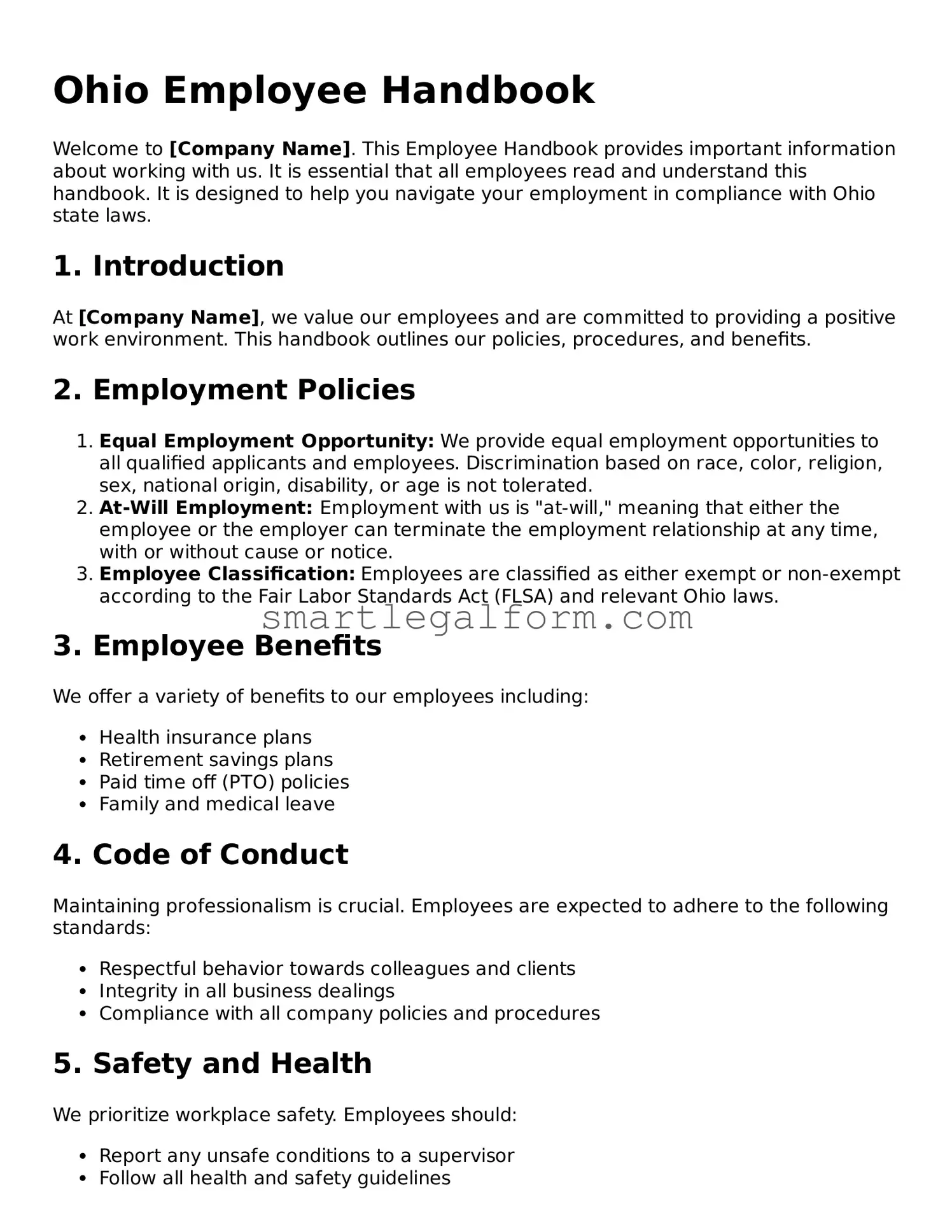Ohio Employee Handbook
Welcome to [Company Name]. This Employee Handbook provides important information about working with us. It is essential that all employees read and understand this handbook. It is designed to help you navigate your employment in compliance with Ohio state laws.
1. Introduction
At [Company Name], we value our employees and are committed to providing a positive work environment. This handbook outlines our policies, procedures, and benefits.
2. Employment Policies
- Equal Employment Opportunity: We provide equal employment opportunities to all qualified applicants and employees. Discrimination based on race, color, religion, sex, national origin, disability, or age is not tolerated.
- At-Will Employment: Employment with us is "at-will," meaning that either the employee or the employer can terminate the employment relationship at any time, with or without cause or notice.
- Employee Classification: Employees are classified as either exempt or non-exempt according to the Fair Labor Standards Act (FLSA) and relevant Ohio laws.
3. Employee Benefits
We offer a variety of benefits to our employees including:
- Health insurance plans
- Retirement savings plans
- Paid time off (PTO) policies
- Family and medical leave
4. Code of Conduct
Maintaining professionalism is crucial. Employees are expected to adhere to the following standards:
- Respectful behavior towards colleagues and clients
- Integrity in all business dealings
- Compliance with all company policies and procedures
5. Safety and Health
We prioritize workplace safety. Employees should:
- Report any unsafe conditions to a supervisor
- Follow all health and safety guidelines
- Participate in safety training programs
6. Acknowledgment of Receipt
By signing below, you acknowledge that you have received and read the [Company Name] Employee Handbook and understand the policies outlined within.
Employee Name: [_________________]
Employee Signature: [_________________]
Date: [_________________]
